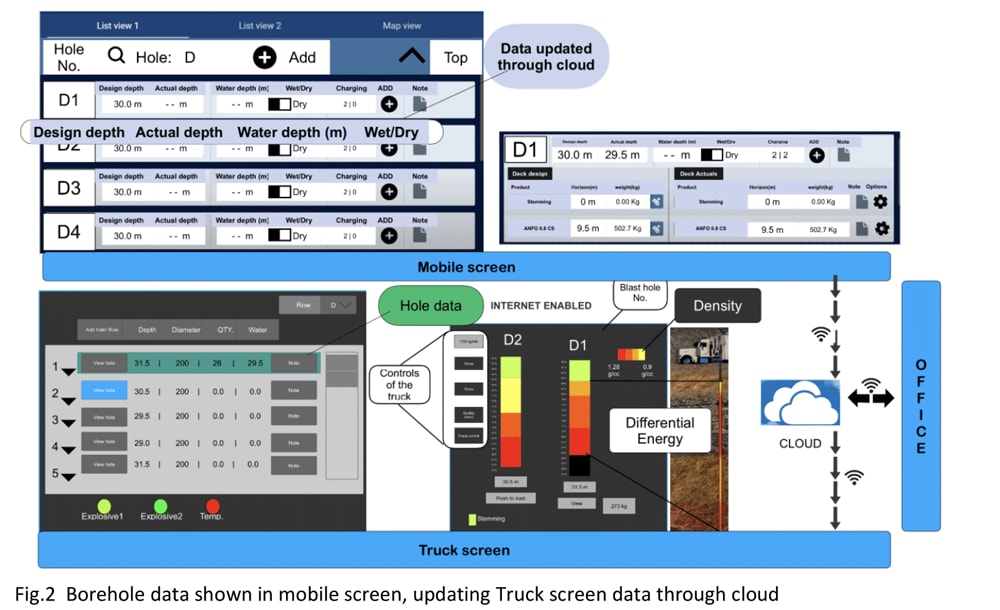The smart wireless detonator is the future for the mining industry. The most advanced blasting system today provides efficient blast with Radio Frequency (RF) antennas to communicate, but they lack automation in mines which is an important part for an efficient blast. Our Smart detonators adjust the data of blast load, fragmentation and vibration control, which are the main factors responsible for a successful blast in mines, on a real-time basis for required outcomes. A poorly controlled blast outcome can negatively impact 80% of the total mine processing cost.
Our developed product provides real-time information, using the Internet of Things (IoT). They have in-built Ground Penetrating Radar (GPR) technology in smart detonators which provides the mine condition and updates it through the cloud from time to time. GPR is a geophysical, non-destructive method which uses RF waves to image the subsurface.
Here, GPR uses the cheap yet efficient Printed Circuit Boards (PCB) based antennas called strip antennas to image the subsurface. The information is sent wirelessly, using these antennas. The GPR module, which is a part of our smart detonator, is the RF module which consists of a leaf module and Intelligent C-programmable I/O (ICI). Leaf module is an RF node with the antenna interface on one side and local PCB on the other side which interfaces with sensor chips and control unit. ICI is a user-defined event handler which uses high-level C-programming language to communicate within the GPR module (RF module). ICI acts as a bridge between both sides of the Leaf module. ICI program the leaf module using C-programming, manage the RF settings, removing the need for external circuits. ICI supports an advanced RF protocol, creates alarms, process local signals, logs local data, initiates transmit to base-station based on local triggers, etc. All the leaf nodes are connected to the main module wirelessly. The main module receives signals through an antenna and it contains PCB, USB transceiver and antenna for functioning. PCB in the main module contains data processors and antenna interfaces. They are connected to the mobile on-site which acts as a net controller through which data is sent to cloud.
The Differential blasting technique which is loading of explosives with different energies (as shown in figure 2, truck loading different mixtures of explosives), in a single blast hole, varies with the rock and their presence in the strata of the hole. Differential energy helps reduce NOx fumes post-blast, and blasts cost, effectively, hence updating it is important. The stemming, which is the amount of sand required above the explosive in a blast hole to create a required blast pressure, is also automatically updated upon calculation of the loaded explosive data in the blast hole.
The blast hole data is sent through the cloud when the USB is connected to the mobile. The cloud operates with the mobile, bulk loading system and the office, where the design optimisation before the activation of smart detonator and analytics with enhanced insights, are carried out.
Like this entry?
-
About the Entrant
- Name:Prudhviraj Dasari
- Type of entry:individual
- Software used for this entry:GprMax
- Patent status:none








